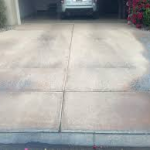When it comes to building a roof on a building whether a domestic or commercial property there are many different building materials that can be used. One of the factors that will affect the choice of material is the design of the roof. For example a pitched roof will potentially use different materials to a that used by a Flat roofing in Evesham company. Many roofing companies will have materials that they prefer to use but most will have options covering a vast array of building materials in terms of their look, texture and durability.

Slate is one such option for roofing. It is in fact created from a shale sediment that is made up of volcanic ash or clay and this composition will depend very much on the location from which the slate is sourced. It’s make up allows for the slate sheets to be broken into thinner layers whilst still remaining durable and hard wearing. It was, in the past, a material that was incredibly expensive to purchase and work with, which resulted in it being used only on upper class buildings such as castles and military establishments. It is thought that the first building to have a slate roof was found in North Wales around 1300 AD.
It is not only in the UK that Slate has been a popular building material, especially for roofing tiles. It is thought that most of the world’s slate roofs can be found in Spain with a staggering 90 percent being found in this country. It was the Spanish who began quarrying for slate that was then used in domestic buildings in around the 1800’s. It was during a similar time that quarrying slate began in America in around 1785, although slate had been used in roof construction in country from the 1600s onwards.

For a hundred years slte was one of the most popular roofing materials and was used in many commercial and domestic building. But from the 1900s onwards it popularity started to decline as more affordable options such as asphalt came into the building sector. Newer materials were established that were just as durable as slate but cheaper to make and work with. This led to a rapid decline in the use of slate in roofing. In more recent years there has been a slow increase in the number of people looking at slate as an option as a desire to preserve historic buildings and create new building in an historical style have emerged.





















+ There are no comments
Add yours